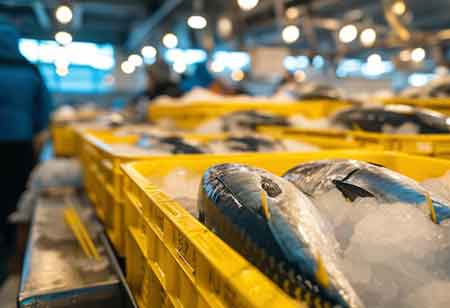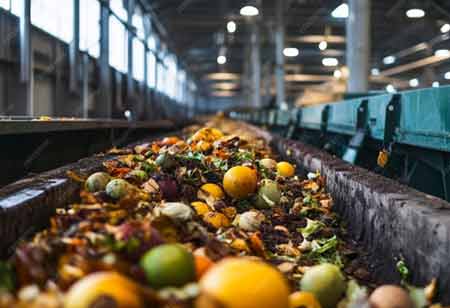THANK YOU FOR SUBSCRIBING
Be first to read the latest tech news, Industry Leader's Insights, and CIO interviews of medium and large enterprises exclusively from Food and Beverage Tech Review
Cutting-Edge Innovations in Seafood Processing for Aquatic Foods
Innovations in seafood processing, from robotics to AI and sustainable packaging, are enhancing efficiency, safety, and traceability while reducing waste and environmental impact.

By
Food and Beverages Tech Review | Wednesday, October 08, 2025
Stay ahead of the industry with exclusive feature stories on the top companies, expert insights and the latest news delivered straight to your inbox. Subscribe today.
Fremont, CA: Technological advancements are reshaping the seafood processing industry by boosting efficiency, safety, sustainability, and product quality. These innovations address key challenges like overfishing, food waste, and the growing demand for high-quality seafood. Automation—particularly robotics—is streamlining operations, reducing manual labor, and ensuring precise handling of tasks such as sorting, cutting, filleting, and packaging.
Robotic arms handle delicate seafood products manually. Advanced sensors and imaging technologies enable robots to identify and process seafood based on size, shape, and quality, ensuring consistency in output. Automation reduces operational costs and helps companies meet the growing demand for seafood products. High-pressure processing (HPP) is a non-thermal method used to extend the shelf life of seafood without compromising its nutritional value or taste. In HPP, seafood is subjected to extremely high pressures (up to 600 MPa), which inactivates harmful microorganisms and enzymes that cause spoilage.
Unlike traditional thermal processing methods, which can negatively affect the texture and flavor of seafood, HPP maintains freshness and quality. It is particularly effective for ready-to-eat seafood products like oysters, crab meat, and shrimp. HPP has gained popularity due to its ability to ensure food safety, meet consumer demand for minimally processed foods, and reduce the need for chemical preservatives. It increases productivity and enhances food safety by minimizing human contact with the product. The intelligent packaging systems can alert producers, retailers, and consumers when seafood is nearing spoilage, helping to reduce food waste.
Time-temperature indicators (TTIs) can show whether seafood has been exposed to temperature fluctuations that could compromise its quality. Blockchain technology is revolutionizing the seafood supply chain by enhancing traceability and transparency. It ensures that consumers and retailers can verify their seafood's source, helping combat illegal fishing and mislabeling issues. The eco-friendly packaging solutions reduce the environmental impact of seafood production and align with consumer preferences for sustainable products—research into antimicrobial coatings in packaging by preventing bacterial growth.
AI and data analytics optimize seafood processing and supply chain management. ML models can enhance the quality control process by detecting defects in seafood products during processing. AI can help monitor fish stocks and assess the health of aquatic ecosystems, contributing to more sustainable fishing practices. The shift toward sustainability is driving innovation in seafood industry packaging materials. Traditional plastic packaging is increasingly being replaced by biodegradable and bio-based alternatives made from renewable resources such as algae, seaweed, and plant-based materials.
I agree We use cookies on this website to enhance your user experience. By clicking any link on this page you are giving your consent for us to set cookies. More info







